Interiors
How to choose ceiling fans
Who doesn't love the gentle whir of a ceiling fan? Along with frogs and cicadas, it is one of the sounds that signifies summer has arrived. Those days when the roar of the cicadas actually make you feel the heat, is the time to ramp up the overhead fans. A good architect will ensure that your house is facing the right direction and designed in such a way to encourage cross breezes and minimise heat, but there will be days when you will need a little more assistance. There will be days we know when you have to ramp up the air conditioning too, however well thought through your house plan is, but often a ceiling fan may be all you need.
You should incorporate these into the plan for your new build or renovation rather than trying to retrofit these around lighting designs and this post will guide you through how to choose ceiling fans that are right for your home and style.
Ceiling fan colour
When you choose ceiling fans, you must consider the overall style of your house and the way that you have decorated it and generally it will be the colour that will dictate which style the fan fits into. Remember when times were simple and the choice you had for a ceiling fan was white or silver? Those days have gone. The choice of colour and finish for ceiling fans is now huge. This is good and bad. Choice is great but can be overwhelming.
The current trend is to use accents of black in our homes, whether it is tapware, door handles and hardware or curtain rods. This is a classic Hamptons style look with a twist to get away from the completely white schemes. It also suits gracious country style homes and industrial style inner city units. It therefore follows that a black or dark coloured ceiling fan will also suit this look.
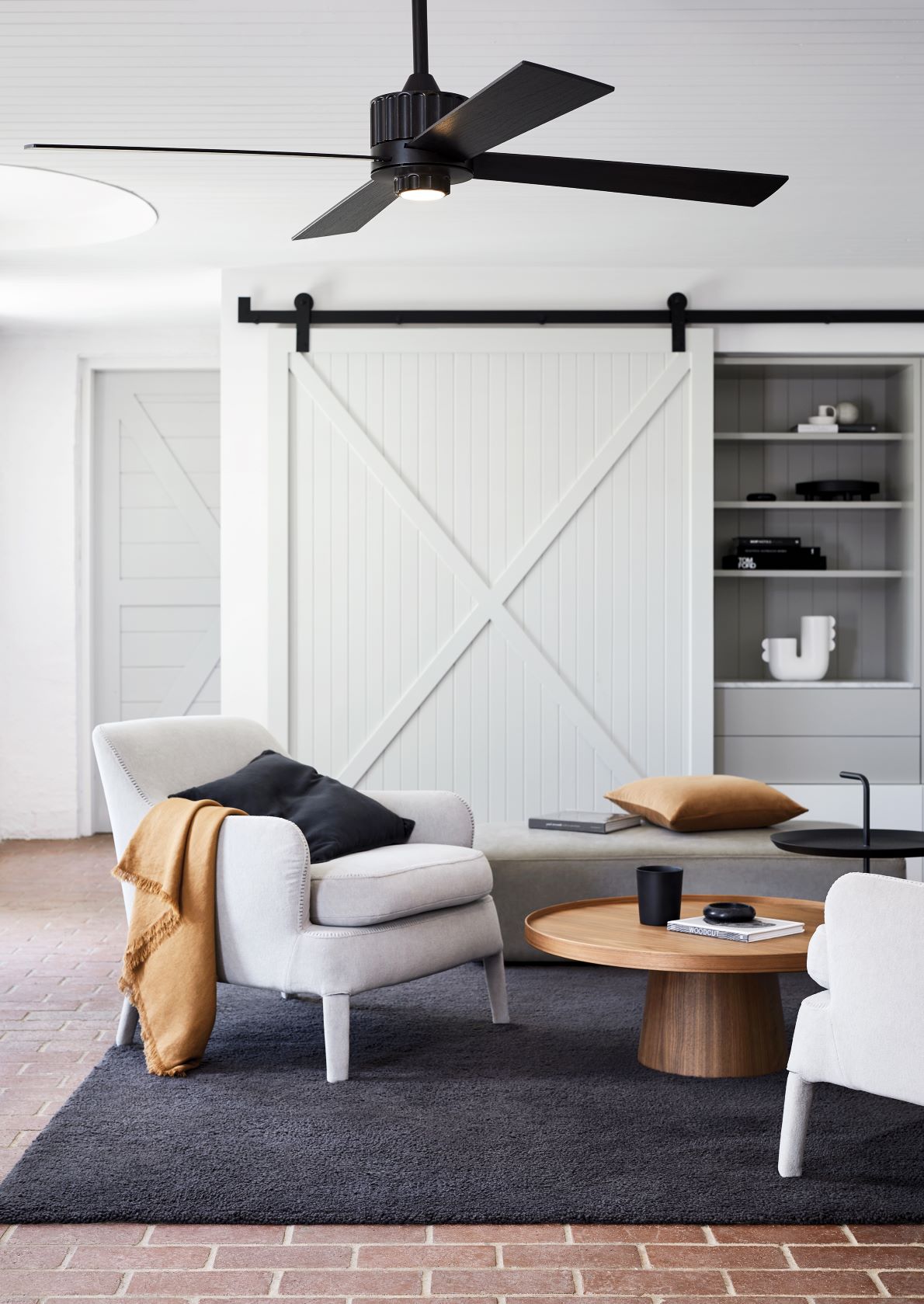
A dark timber ceiling fan suits a contemporary style home where other dark timbers have been introduced in cabinetry. Timber colours don't need to match throughout a home, in fact it's better if they don't as the look can be a contrived one and timber, as a natural product, will always give you a more organic and fluid look. You will find though in a scheme that one tone will be dominant and this will be the darker one. Therefore the dark timber fan in the room below suits the scheme well as the dark timber cabinetry is very dominant and grounds the overall look and the darker tone at ceiling height pulls the look together.
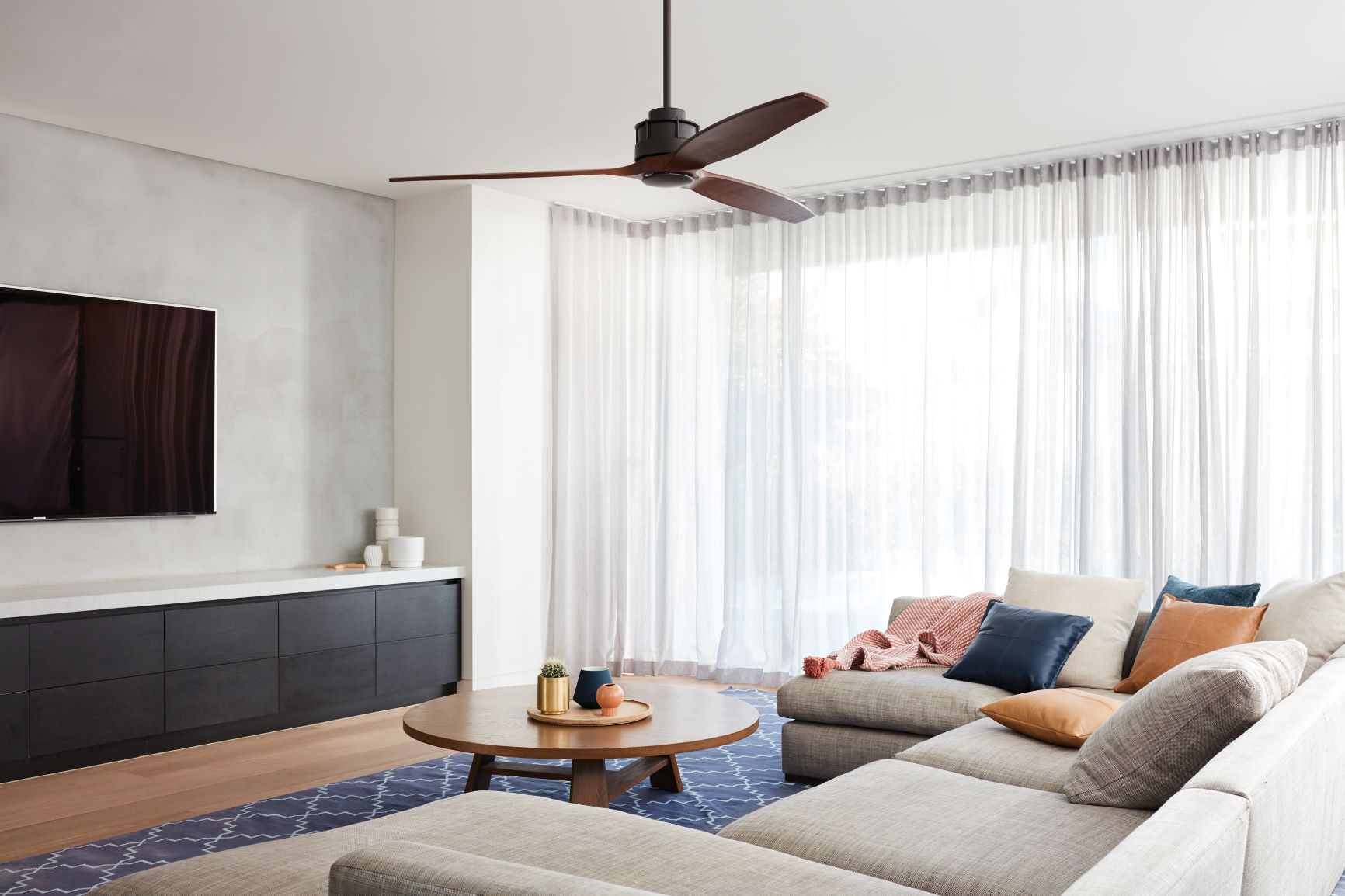
If however, you are a fan of Scandi style, where the colour palette is delicate and light, a ceiling fan in a pale timber would suit the look perfectly.
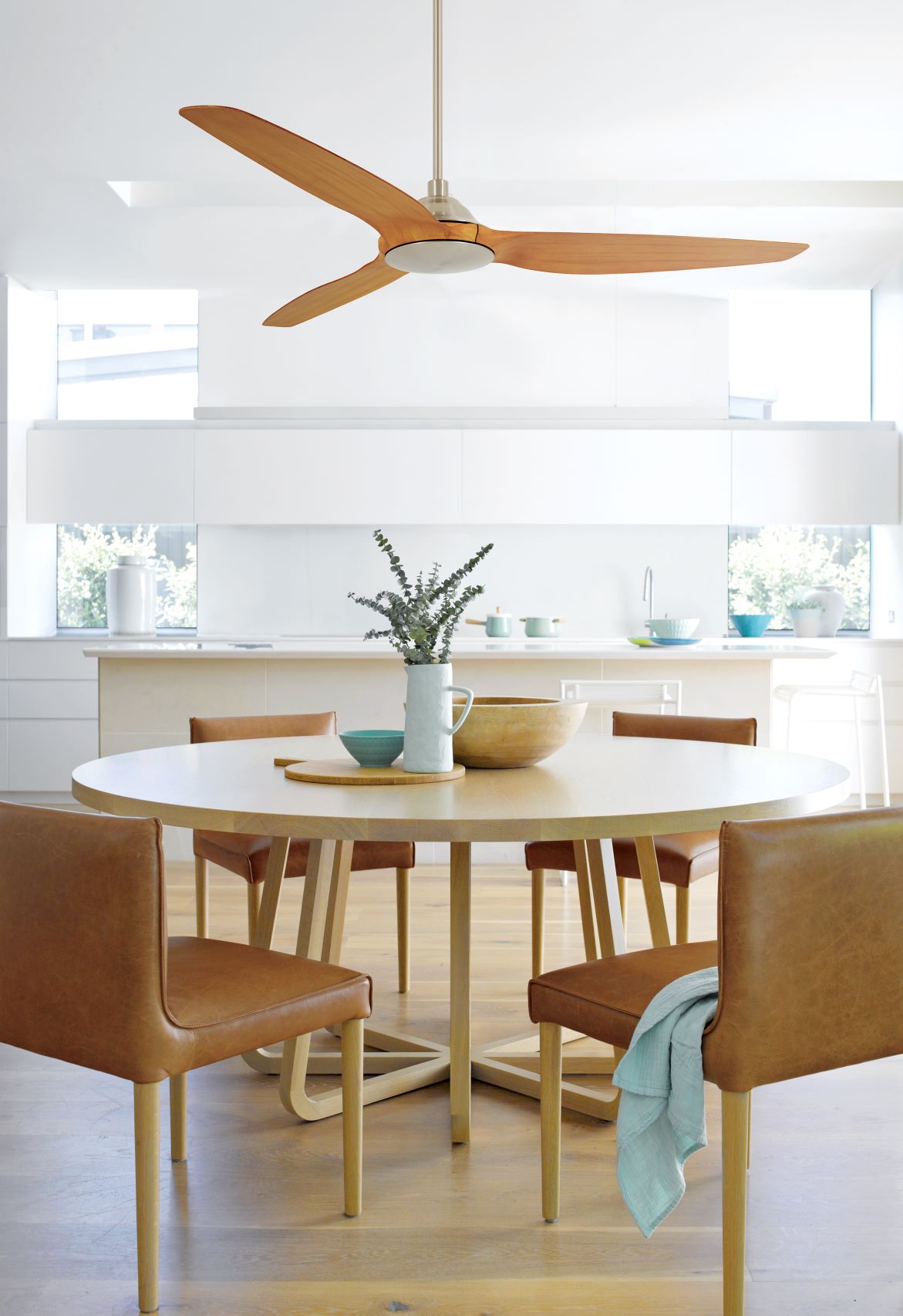
Remember that however lovely ceiling fans can look, you may just want them to blend into the ceiling and there is nothing wrong with selecting a simple white fan, particularly if your ceilings are on the low side. In the room below the coffered ceiling is striking and a feature fan may have detracted from this and simply made it too busy.
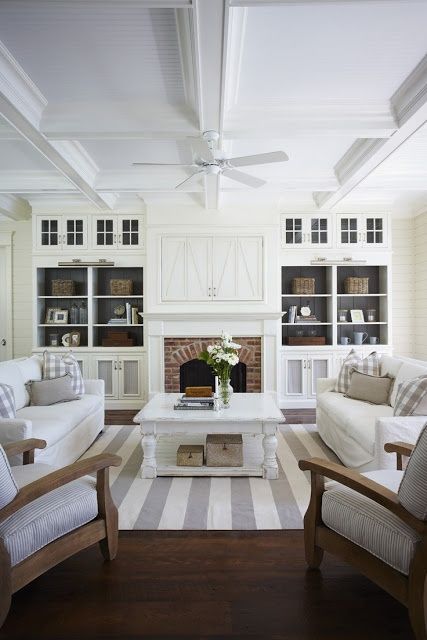
So before you get to choose ceiling fans, define what your decorating style is and put together a mood board of ideas and then see which colour and style of fan suits your look.
I have a guide here to help you to define your decorating style.
How large should a ceiling fan be?
The first thing to do when you are considering which ceiling fan to buy is to measure the room or the space that it will fit into.
There is no point putting a smaller 122cm fan into a large room as it will have to work twice as hard and be on a full speed which can get noisy. This size will be fine for a room of 3 to 4 metres. However once the room is 6m x 6m you will need a larger 137cm fan. If you have a long space, you should divide it into two and measure and treat each space accordingly.
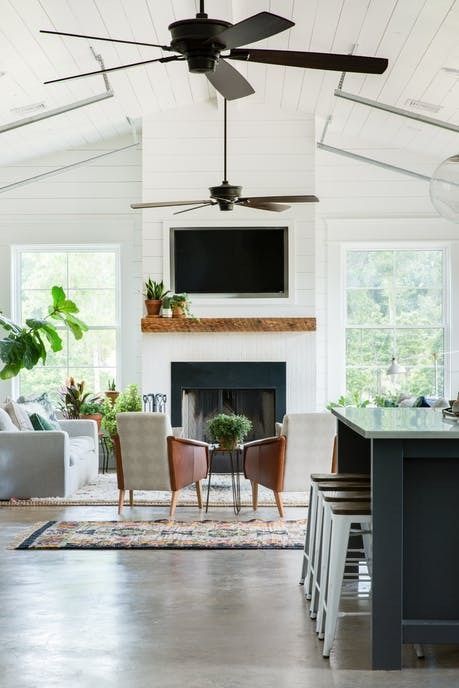
Over-sized ceiling fans are now getting popular with blades of around 150cm. These are very effective for large, grand open plan spaces and also work well in outdoor settings. Once a fan is large though you need to have a range of settings to control the speed level. Many ceiling fans now come equipped with different settings, including a sleep one, so this is something else to consider.
One thing that I would like to stress though when it comes to the size you choose for your ceiling fan is that it must look in proportion to the room. Of course, you want it to look great. Some of them can be quite an investment so you don't want it to fade away into the background, but if visually it completely takes over the room, this is not aesthetically pleasing. So before you decide to go out and buy the biggest and best ceiling fan you can afford, check that in addition to the practical considerations, you ensure that you get the balance right to the space available.
The right positioning for a ceiling fan
A ceiling fan must be placed at least 2.1m from the floor and usually around 30cm from the ceiling. If your ceiling is any higher then you will need to also install an extension rod or you won't feel the effectiveness of the fan. This is usually the case for fans in outdoor rooms.
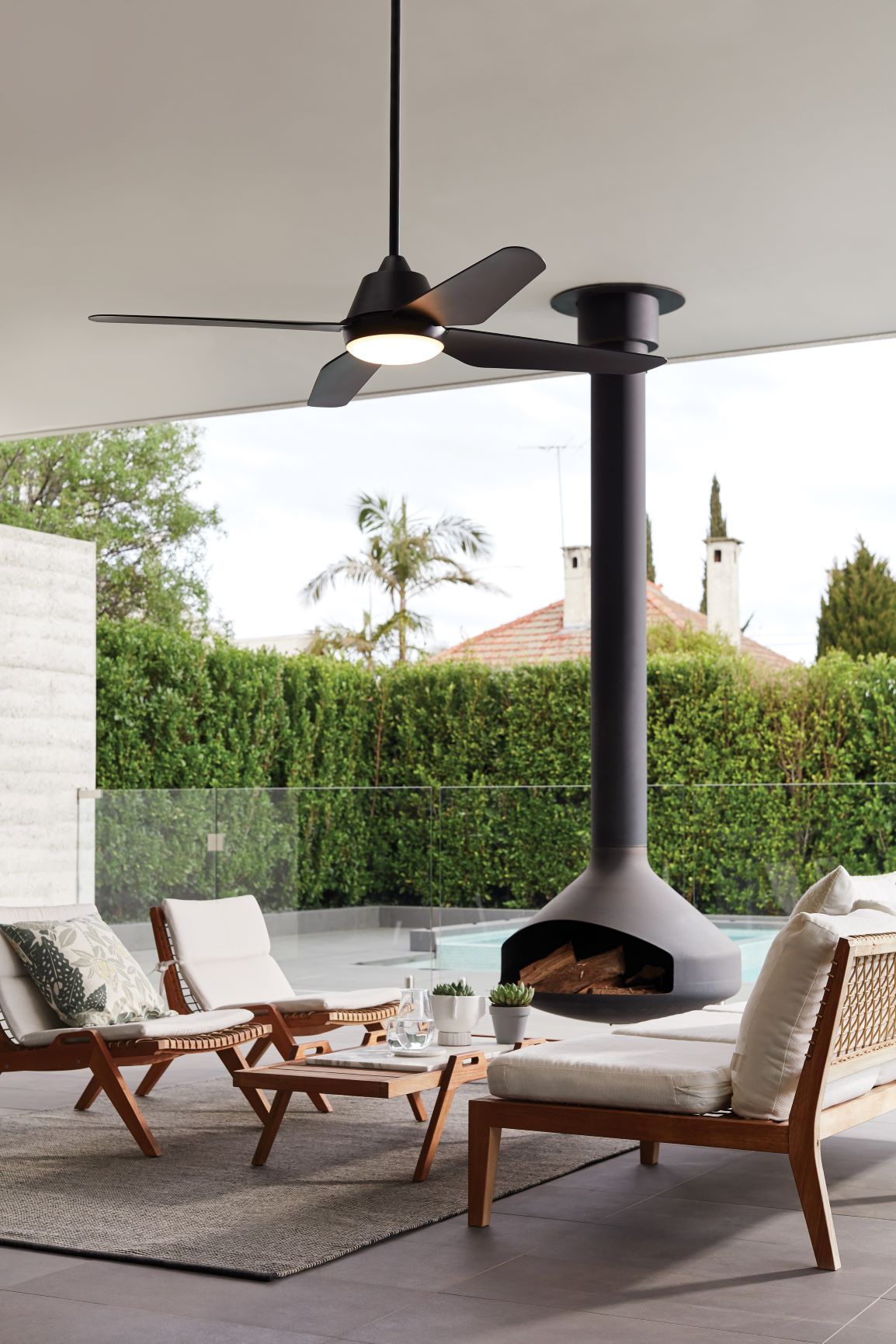
Visually you would usually install a fan in the centre of the room, however this isn't necessarily always right. For bedrooms, in particular, a fan is effective installed over the bed or in an open plan zone you may just want to install the ceiling fan over the seating area.
One of the most important points to remember when you choose ceiling fans is to always measure the length of the blade and ensure that there is clearance from downlights or you can create an extremely annoying flickering effect. It's often a good idea to incorporate a light into the ceiling fan to give you the option of more lighting too.
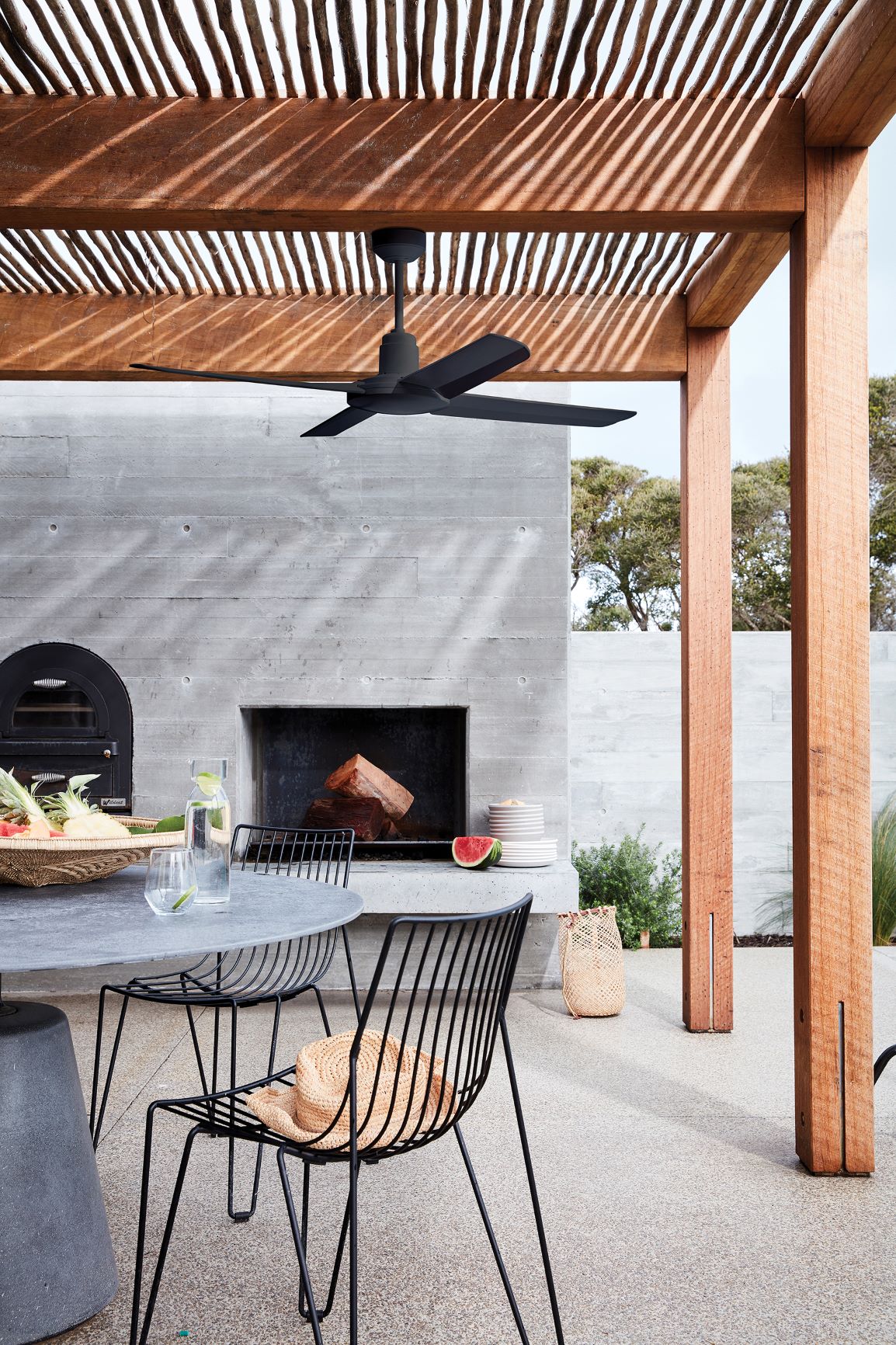
Final point to remember for how to choose a ceiling fan
A ceiling fan will move the air around in a room but it won't cool the air. Therefore if the day looks like it will be a hot one, cool the room quickly with air conditioning. Then switch this off and let the ceiling fan do the work of moving the lovely cool air around the room throughout the day. Use good quality sun screen blinds or external awnings to keep the heat away from the window and watch your electricity bills go down.
Related: Control heat and light with these interior and exterior blinds
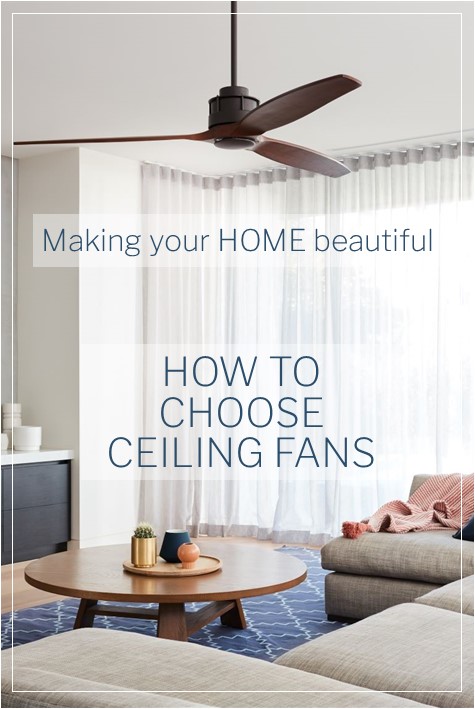
Have you incorporated ceiling fans into your home or outdoor area? I would love to hear your comments in the section below. The style and colour can be difficult to settle on and I always recommend putting together a mood board when you are decorating a room. I have a free e-book in my Free Resource Library to help you.

A remote is very useful for bedroom fans
Perfect timing- you must have known I was looking up which ceiling fans to choose for our renovation!
We need two for bedrooms and one on an extension pole for an outdoor gabled deck area- all need to be white without lights.
The problem I have is whether to choose 3 or 4 blades style- sometimes the 3 blade styles reminds of a plane propeller. Also, the house is Lake Macquarie (salt water) and gets a fair bit of sea breeze both NE & southerly so all fans need to be ‘coastal grade’. Do you have any suggestions? The house design is a coastal rustic Hamptons style.
Just a side note, I really enjoy your articles and have helped me immensely during the renovation.
Hi Michele great to hear that this was timely for you! Have you looked at The Blue Space for ceiling fans? They have a wide range of 4 blade fans and also the Aviator style with more blades which you might like. Their outdoor fans have a section for coastal grade too and some are in white so you might find something there that suits. Good luck – so glad my blog has been useful throughout your build. Samantha